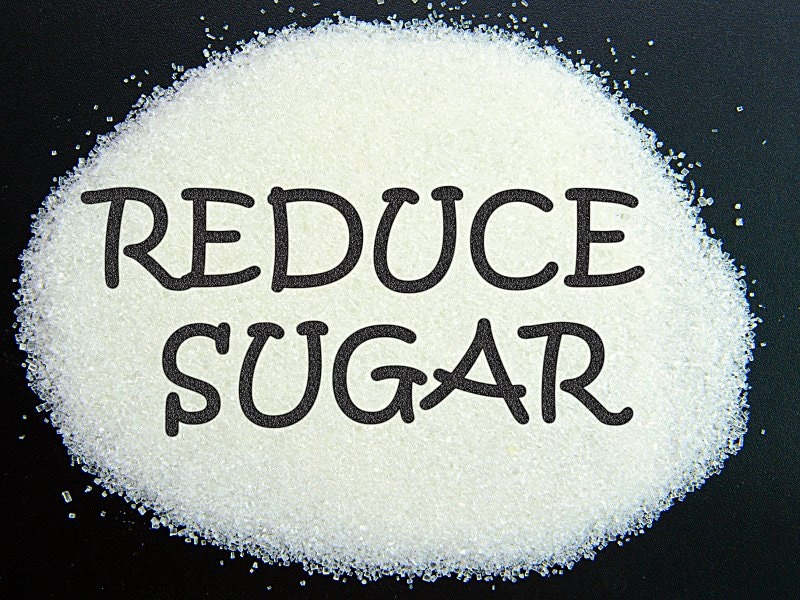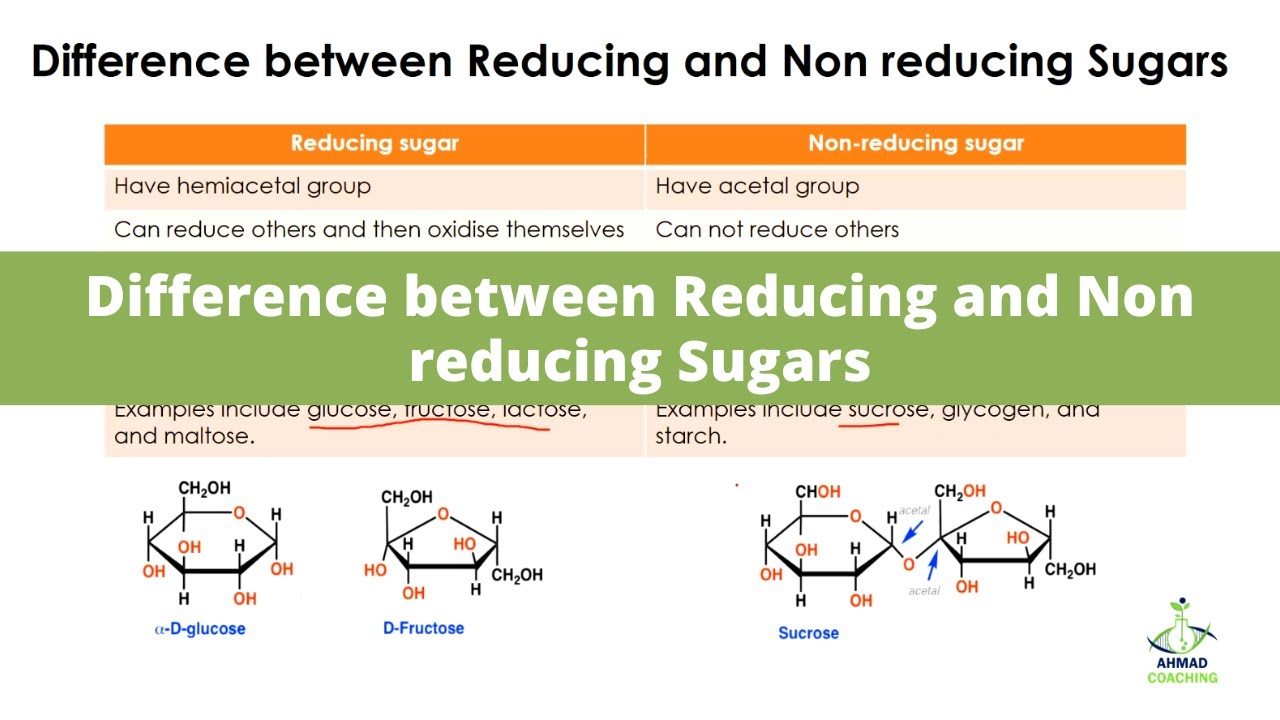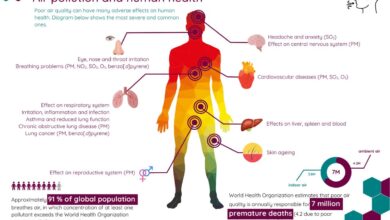
Why The WHO Advises You To Reduce Sugar Consumption
Why The WHO Advises You To Reduce Sugar Consumption? It’s a question many of us are asking, especially as we become more aware of the hidden sugars lurking in our food and drinks. The World Health Organization (WHO) is urging us to cut back on added sugars for a very good reason: our health.
Excessive sugar intake is linked to a growing number of chronic diseases, from type 2 diabetes and heart disease to obesity and even some types of cancer. It’s not just about the sweet taste; it’s about the long-term consequences of a high-sugar diet on our bodies.
The WHO’s recommendations are based on solid scientific evidence that shows the detrimental effects of sugar on our metabolic processes. It’s not just about the total amount of sugar we consume, but also the type of sugar. Fructose, for example, is particularly problematic as it can lead to insulin resistance and fatty liver disease.
The WHO provides clear guidelines on how much sugar is safe to consume, and these guidelines are essential for maintaining a healthy lifestyle.
Health Risks of Excessive Sugar Consumption

Sugar, a ubiquitous ingredient in our modern diet, often gets a bad rap. While moderate sugar intake isn’t harmful, excessive consumption can have significant consequences for our health, contributing to a range of chronic diseases. Understanding the link between excessive sugar and these health issues is crucial for making informed dietary choices.
The Link Between Sugar and Chronic Diseases
Excessive sugar intake is directly linked to an increased risk of developing chronic diseases like type 2 diabetes, heart disease, and obesity. The body processes sugar differently than other carbohydrates. When we consume too much sugar, our bodies struggle to keep up with the rapid influx of glucose, leading to a cascade of negative effects.
- Type 2 Diabetes:When the body becomes resistant to insulin, a hormone that regulates blood sugar levels, it leads to a condition called type 2 diabetes. Excessive sugar intake plays a significant role in the development of insulin resistance, making it a key risk factor for this disease.
- Heart Disease:High sugar intake can contribute to high blood pressure, elevated cholesterol levels, and inflammation, all of which are major risk factors for heart disease. Sugar’s contribution to these factors is primarily due to its impact on insulin resistance and the body’s inflammatory response.
- Obesity:Excess sugar intake provides a surplus of calories that can be stored as fat. When this happens consistently, it leads to weight gain and potentially obesity. The body’s inability to effectively process excessive sugar, coupled with the lack of satiety provided by sugary foods, contributes to this cycle of overconsumption and weight gain.
Sugar and Inflammation
Inflammation is a natural process that helps the body heal and fight off infections. However, chronic inflammation, a state of prolonged inflammation, is linked to various health problems, including heart disease, cancer, and Alzheimer’s disease. Excessive sugar consumption can contribute to chronic inflammation in the body.
“Sugar is a potent inflammatory agent. It increases the production of inflammatory molecules called cytokines, which can lead to chronic inflammation.”
Sugar triggers the production of inflammatory molecules, such as cytokines, which can lead to chronic inflammation. This chronic inflammation can damage cells and tissues, increasing the risk of developing chronic diseases.
Long-Term Consequences of a High-Sugar Diet
A high-sugar diet can have long-term consequences for the body’s organs and systems.
The WHO advises reducing sugar intake for good reason: excess sugar contributes to chronic diseases like diabetes and heart disease. But that doesn’t mean you have to sacrifice flavor! Check out these 5 classic Chinese recipes under 500 calories you can make at home for delicious and healthy meals.
By incorporating more whole foods and balanced recipes into your diet, you can enjoy delicious meals while still maintaining a healthy sugar intake.
- Liver Disease:The liver is responsible for processing sugar. When overloaded with excessive sugar, the liver can become damaged, leading to fatty liver disease, a precursor to more serious liver conditions.
- Dental Problems:Sugar feeds the bacteria in our mouths, contributing to tooth decay and gum disease.
- Mental Health:Studies suggest a link between high sugar intake and an increased risk of depression and anxiety. While the exact mechanisms are still being investigated, the impact of sugar on inflammation and brain chemistry is thought to play a role.
Sugar’s Impact on the Body
Sugar, in its various forms, plays a crucial role in our bodies’ energy production and overall functioning. However, excessive consumption can lead to various health complications, making it essential to understand how sugar affects our bodies.
Blood Sugar Levels and Insulin Resistance
Sugar consumption directly influences blood sugar levels, which are regulated by the hormone insulin. When we consume sugar, our bodies break it down into glucose, the primary fuel for our cells. This glucose enters the bloodstream, causing blood sugar levels to rise.
In response, the pancreas releases insulin, a hormone that helps glucose enter cells for energy use or storage as glycogen in the liver and muscles.Insulin resistance occurs when cells become less responsive to insulin, preventing glucose from entering them effectively.
This leads to a buildup of glucose in the bloodstream, causing high blood sugar levels. Over time, insulin resistance can contribute to the development of type 2 diabetes, a chronic condition characterized by high blood sugar levels.
Sugar Digestion and Absorption
The digestive process of sugar begins in the mouth, where salivary amylase, an enzyme, breaks down complex sugars into simpler sugars. As food travels down the esophagus and into the stomach, the stomach acids further break down food. The small intestine is where most sugar absorption occurs.
Here, enzymes like sucrase, lactase, and maltase break down disaccharides (like sucrose, lactose, and maltose) into monosaccharides (glucose, fructose, and galactose). These monosaccharides are then absorbed into the bloodstream and transported to the liver, where they are processed for energy use or storage.
Effects of Different Sugar Types
Different types of sugar have varying effects on the body:
- Glucose:The primary sugar used by the body for energy. It’s readily absorbed and utilized by cells.
- Fructose:Primarily processed by the liver. Excessive fructose consumption can lead to fatty liver disease and other metabolic problems.
- Sucrose:A disaccharide composed of glucose and fructose. Its breakdown produces both sugars, leading to the combined effects of glucose and fructose on the body.
“While glucose is a primary energy source, fructose is primarily processed by the liver, which can lead to fat accumulation and metabolic problems if consumed excessively.”
The WHO’s Recommendations for Sugar Intake
The World Health Organization (WHO) provides guidelines for sugar consumption to promote optimal health and prevent chronic diseases. These recommendations aim to limit added sugars, which are sugars that are not naturally present in foods but are added during processing or preparation.
Recommended Daily Sugar Intake, Why the who advises you to reduce sugar consumption
The WHO recommends that adults and children limit their daily intake of free sugars to less than 10% of their total energy intake. This translates to approximately 50 grams (or 12 teaspoons) of sugar per day for an average adult.
The WHO advises reducing sugar intake because of its link to chronic diseases like diabetes and heart disease. But don’t despair! You can still enjoy delicious, comforting meals while staying healthy. Check out 10 easy chunky chili recipes under 360 calories for some satisfying and nutritious options.
These recipes are packed with flavor and protein, helping you feel full and satisfied without relying on sugary treats. Remember, making small changes to your diet can have a big impact on your health and well-being.
For children, the recommendation is even lower, with a maximum of 25 grams (or 6 teaspoons) of sugar per day for a child aged 4-6 years.
Rationale Behind the Recommendations
The WHO’s recommendations are based on extensive scientific evidence that links excessive sugar consumption to various health risks, including:
- Weight gain and obesity
- Type 2 diabetes
- Cardiovascular diseases
- Non-alcoholic fatty liver disease
- Some types of cancer
These recommendations aim to reduce the risk of these chronic diseases and promote overall health and well-being.
Challenges of Adhering to the Recommendations
Adhering to the WHO’s recommendations can be challenging in today’s food environment, where processed foods and sugary drinks are readily available and often marketed aggressively.
- Many processed foods contain high amounts of added sugars, making it difficult to track and limit intake.
- Sugary drinks, such as sodas and fruit juices, are often consumed in large quantities, contributing significantly to overall sugar intake.
- The food industry often uses marketing strategies that promote the consumption of sugary foods and beverages, making it challenging to make healthy choices.
Strategies for Reducing Sugar Consumption
Reducing sugar intake is a crucial step towards improving overall health and well-being. It can be challenging to navigate the modern food environment, where sugar is often hidden in unexpected places. However, with a conscious effort and some strategic planning, you can effectively reduce your sugar consumption and reap the benefits of a healthier lifestyle.
Practical Tips for Reducing Sugar Intake
By implementing these practical tips, you can gradually reduce your sugar intake without feeling deprived.
- Read Food Labels Carefully:Pay close attention to the sugar content listed on food labels, especially for processed foods, beverages, and desserts. Look for terms like “added sugar,” “sucrose,” “glucose,” and “fructose.” Choose products with lower sugar content or opt for unsweetened alternatives.
- Limit Processed Foods:Processed foods are often loaded with added sugars, artificial flavors, and unhealthy fats. Focus on consuming whole, unprocessed foods like fruits, vegetables, lean proteins, and whole grains. These natural foods are naturally lower in sugar and provide essential nutrients.
- Choose Whole Fruits Over Fruit Juices:While fruits are a good source of vitamins and minerals, fruit juices are often high in sugar. Opt for whole fruits, which provide fiber that slows down sugar absorption and promotes satiety.
- Be Mindful of Beverages:Sugary drinks like soda, juice, and sweetened coffee and tea are major contributors to excessive sugar intake. Replace these with water, unsweetened tea, or sparkling water with a squeeze of lemon or lime.
- Cook More Meals at Home:When you cook at home, you have complete control over the ingredients and can easily reduce the amount of sugar used. Experiment with healthy recipes that use natural sweeteners like honey or maple syrup in moderation.
- Gradually Reduce Sugar Intake:Instead of making drastic changes overnight, gradually reduce your sugar intake over time. This approach allows your taste buds to adjust and prevents cravings. Start by eliminating sugary drinks, then gradually reduce added sugar in other foods.
- Find Healthy Substitutes:Explore natural sweeteners like stevia, monk fruit, or erythritol, which are low in calories and do not impact blood sugar levels. However, it’s important to note that even these alternatives should be consumed in moderation.
Sample Meal Plan for Reduced Sugar Consumption
This sample meal plan demonstrates how to minimize sugar consumption while maintaining a balanced diet. Remember to adjust portions based on your individual needs and activity level.
| Meal | Food Choices | Notes |
|---|---|---|
| Breakfast | Oatmeal with berries and nuts, unsweetened almond milk | Choose whole-grain oatmeal and avoid added sugar. Berries provide natural sweetness. |
| Lunch | Tuna salad sandwich on whole-wheat bread, with lettuce, tomato, and cucumber | Use lean protein and whole-grain bread. Avoid mayonnaise or other high-sugar spreads. |
| Dinner | Grilled salmon with roasted vegetables and quinoa | Lean protein and whole grains are excellent choices. Use herbs and spices for flavor instead of sugar. |
| Snacks | Fruits, vegetables, plain yogurt, or a handful of nuts | Choose natural snacks that are low in sugar and high in nutrients. |
Sugar Content of Common Foods and Beverages
This table compares the sugar content of common foods and beverages to help you make informed choices.
| Food/Beverage | Sugar Content (grams) per serving |
|---|---|
| Soda (12 oz) | 39 |
| Fruit Juice (8 oz) | 26 |
| Candy Bar (1.5 oz) | 25 |
| Donut (1) | 15 |
| Yogurt (6 oz) | 15 |
| Granola Bar (1.5 oz) | 12 |
| Apple (1 medium) | 19 |
| Banana (1 medium) | 14 |
Sugar Substitutes and Alternatives
You’ve decided to cut back on sugar, but you’re craving that sweet taste. Don’t worry, there are plenty of sugar substitutes and alternatives to help you satisfy your sweet tooth without the downsides of added sugar.
Natural Sweeteners
Natural sweeteners come from plants and often have a lower glycemic index than refined sugar, meaning they don’t cause a rapid spike in blood sugar levels.
- Stevia:This plant-based sweetener is derived from the stevia plant and contains no calories or carbohydrates. It’s about 200 times sweeter than sugar and has a clean, slightly sweet taste. Stevia is a good option for people with diabetes or those following a low-carb diet.
However, some people may experience digestive issues when consuming large amounts of stevia.
- Monk Fruit:Monk fruit is a melon that produces a natural sweetener called mogrosides. It’s about 300 times sweeter than sugar and has no calories or carbohydrates. Monk fruit has a slightly sweet and slightly tangy flavor and is often blended with other sweeteners to enhance its taste.
- Agave:Agave is a honey-like syrup produced from the agave plant. It’s about 1.5 times sweeter than sugar and contains some fructose, a type of sugar that can be metabolized differently by the body. Agave is often used as a sweetener in baked goods and drinks.
- Honey:Honey is a natural sweetener produced by bees from nectar. It contains a mix of sugars, including fructose, glucose, and sucrose. Honey has a slightly sweet and floral flavor and is often used as a topping for yogurt, oatmeal, and toast.
- Maple Syrup:Maple syrup is a natural sweetener produced from the sap of maple trees. It’s about 1.5 times sweeter than sugar and contains a mix of sugars, including fructose, glucose, and sucrose. Maple syrup has a rich, caramel-like flavor and is often used as a topping for pancakes, waffles, and ice cream.
Artificial Sweeteners
Artificial sweeteners are synthetic compounds that are designed to mimic the sweetness of sugar without providing calories. They are often used in diet sodas, sugar-free desserts, and other processed foods.
You know how everyone’s always on about cutting back on sugar? Well, it’s not just a fad. Too much sugar can really mess with your health, but that doesn’t mean you have to give up all your favorite dishes! If you’re craving something flavorful and satisfying, try this teriyaki chicken fried rice recipe.
It’s packed with protein and veggies, and the sweet and savory flavors are totally addictive – without going overboard on the sugar.
- Aspartame:Aspartame is about 180 times sweeter than sugar and is often used in diet sodas and other low-calorie foods. It’s generally considered safe for most people, but some individuals may experience headaches, dizziness, or other side effects.
- Saccharin:Saccharin is about 300 times sweeter than sugar and is often used in diet sodas and other low-calorie foods. It has a slightly bitter aftertaste, which some people find unpleasant.
- Sucralose:Sucralose is about 600 times sweeter than sugar and is often used in diet sodas, sugar-free desserts, and other low-calorie foods. It’s generally considered safe for most people, but some individuals may experience digestive issues when consuming large amounts of sucralose.
- Neotame:Neotame is about 7,000 times sweeter than sugar and is often used in diet sodas and other low-calorie foods. It’s generally considered safe for most people, but some individuals may experience digestive issues when consuming large amounts of neotame.
Choosing Sugar Substitutes
The best sugar substitute for you will depend on your individual needs and preferences. Consider the following factors:
- Taste:Some sugar substitutes have a bitter or metallic aftertaste, while others taste very similar to sugar.
- Health Implications:Some sugar substitutes may have potential health implications, such as digestive issues or headaches.
- Cost:Natural sweeteners are often more expensive than artificial sweeteners.
- Availability:Some sugar substitutes are more widely available than others.
Recipes for Healthy and Sugar-Free Desserts and Snacks
- Sugar-Free Chocolate Mousse:Combine 1 cup of unsweetened cocoa powder, 1 cup of almond milk, 1/2 cup of avocado, 1/4 cup of stevia, and 1/4 teaspoon of vanilla extract. Blend until smooth and creamy.
- Sugar-Free Banana Bread:Combine 2 mashed ripe bananas, 1/2 cup of almond flour, 1/4 cup of coconut oil, 1/4 cup of unsweetened applesauce, 1/4 cup of stevia, 1 teaspoon of baking soda, and 1/2 teaspoon of cinnamon. Mix well and bake at 350 degrees Fahrenheit for 30 minutes.
- Sugar-Free Oatmeal Cookies:Combine 1 cup of rolled oats, 1/2 cup of almond flour, 1/4 cup of coconut oil, 1/4 cup of unsweetened applesauce, 1/4 cup of stevia, 1 teaspoon of vanilla extract, and 1/2 teaspoon of cinnamon. Mix well and bake at 350 degrees Fahrenheit for 10 minutes.
The Importance of a Balanced Diet

A balanced diet is crucial for overall health and well-being, and it plays a significant role in reducing sugar consumption. By prioritizing whole foods, fruits, vegetables, and lean protein, you naturally decrease your intake of processed foods and sugary drinks.
Benefits of a Balanced Diet
A balanced diet provides your body with the essential nutrients it needs to function properly. It helps regulate blood sugar levels, boosts energy, and supports a healthy immune system.
Whole Foods
Whole foods are unprocessed and minimally refined. They are rich in fiber, vitamins, minerals, and antioxidants, which contribute to overall health and help regulate blood sugar levels. Examples of whole foods include fruits, vegetables, whole grains, legumes, nuts, and seeds.
Fruits and Vegetables
Fruits and vegetables are naturally low in calories and high in fiber, vitamins, and minerals. They provide essential nutrients that support a healthy immune system, regulate blood sugar levels, and promote satiety. Aim for at least five servings of fruits and vegetables daily.
Lean Protein
Lean protein sources, such as fish, poultry, beans, lentils, and tofu, provide essential amino acids for building and repairing tissues. They also help regulate blood sugar levels and promote satiety, reducing cravings for sugary snacks.
Healthy Fats
Healthy fats, such as those found in avocados, olive oil, nuts, and seeds, are essential for hormone production, brain function, and heart health. They also help you feel full and satisfied, reducing the need for sugary treats.
Fiber
Fiber is an indigestible carbohydrate found in plant-based foods. It helps regulate blood sugar levels, promotes satiety, and supports digestive health. Aim for 25-30 grams of fiber per day.
Balanced Meal Plans
Here are some examples of balanced meal plans that minimize sugar intake:
Breakfast
- Oatmeal with berries and nuts
- Scrambled eggs with whole-wheat toast and avocado
- Greek yogurt with fruit and granola
Lunch
- Salad with grilled chicken or fish
- Lentil soup with whole-wheat bread
- Turkey sandwich on whole-wheat bread with vegetables
Dinner
- Salmon with roasted vegetables
- Chicken stir-fry with brown rice
- Vegetarian chili with cornbread
By incorporating these balanced meal plans into your daily routine, you can significantly reduce your sugar consumption and improve your overall health.
Last Word: Why The Who Advises You To Reduce Sugar Consumption

Reducing sugar consumption is a crucial step towards a healthier future. By making conscious choices about the foods we eat and the beverages we drink, we can take control of our sugar intake and protect ourselves from the long-term health risks associated with excessive sugar consumption.
The WHO’s advice is not just a recommendation; it’s a call to action for all of us to prioritize our health and make informed decisions about our dietary choices. Let’s embrace a healthier lifestyle, one sugar-free step at a time.





